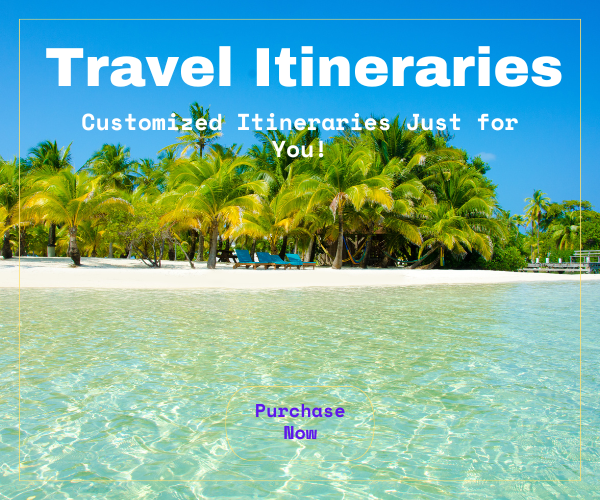
11 Tourist Places in Kathmandu to Visit – Nepal

When visiting the Nepal capital, the ultimate tourist places in Kathmandu will surely be on your agenda; get ready to be mesmerised by a proud country’s history, culture, and beauty.
Nepal has a vibrant culture and a deep sense of spirituality. The Kathmandu Valley is a testament to this, with its rich cultural heritage and stunning attractions that draw visitors worldwide. If you plan a trip to Nepal, visit Kathmandu and explore its many sights.
When you visit Kathmandu, you’ll discover a diverse range of attractions that will keep you captivated for days. From the magnificent temples and pagodas that dot the city to the beautiful gardens and parks, there is something for everyone in Kathmandu. Whether you’re looking for a bustling and crowded atmosphere or a serene and peaceful spot, Kathmandu has everything.
One of the highlights of a visit to Kathmandu is exploring the various historical and cultural landmarks scattered throughout the city. These include the UNESCO World Heritage Sites such as the Swayambhunath Stupa, the Boudhanath Stupa, and the Pashupatinath Temple, among others.
While some of these attractions are still undergoing reconstruction following the 2015 earthquake, they offer a glimpse of the brilliance typical of each Kathmandu place you visit. Ultimately, the experience of braving the chaotic traffic in the vibrant city and discovering inspiration within the vital Kathmandu sightseeing places will be worth it.
A visit to Kathmandu is an experience of a lifetime. With its rich culture, stunning landmarks, and welcoming people, it’s no wonder it’s a popular destination for tourists worldwide.

11 of the best tourist places in Kathmandu.
A couple of essential tips before entering the Kathmandu Attractions
If you’re planning a trip to the bustling city of Kathmandu, there are several crucial things to consider. From navigating the city’s busy streets to ensuring you have all the necessary travel documents, planning is important to maximise your experience.
Additionally, research local customs and etiquette to ensure respect and awareness of cultural differences. With a bit of preparation, you’ll be able to fully immerse yourself in the vibrant culture and history of Kathmandu.
Respect the local customs and etiquette of Nepal.
When you plan to visit Nepal or any other foreign country, you must acquaint yourself with the local customs and etiquette. Every place has its unique cultural practices that shape its way of life. In Nepal, for instance, removing your shoes before entering someone’s home is customary.
Nepalese people also greet each other with a “Namaste” and use their right hand to eat and shake hands. By understanding and respecting these customs, you can show appreciation for the local culture and avoid unintentionally offending anyone.
Guides in Kathmandu
When visiting some of Kathmandu’s UNESCO World Heritage Sites, such as Durbar Square or the Swayambhunath Stupa, it’s common for locals to approach you and offer their services as guides. These guides are usually friendly and harmless but aim to earn money.
If you want a guide to show you around and provide more information about the site, you can negotiate a price and accept. However, you can decline their services if you prefer to explore the site alone.
Beggars
If you’re planning a trip to Kathmandu, you should know that you may encounter beggars at many popular tourist attractions. These beggars come from all walks of life, from older people to young school-aged children.
While it can be challenging to help every beggar you come across, several charities in the area are doing vital work to support those in need. Donating to one of these organisations can help make a difference in the lives of those struggling.
Passport
When you plan to visit the Durbar Squares within the Valley, it is essential to remember that the entry fees may vary based on your nationality. Therefore, you may be asked to present your passport as proof of nationality.
You may have to pay a higher fee if you do not carry your passport. Hence, it’s always advisable to photocopy your passport to avoid inconvenience and save money.
Securing belongings
Nepal is a beautiful country that attracts tourists from all over the world. However, like any other country, petty crime can occur here, and it’s always better to be safe than sorry. To ensure that you enjoy your trip to Nepal to the fullest, it’s recommended that you take some precautions. Keeping your belongings secure in a travel bag or wallet is an excellent way to prevent theft.
It is also a good practice to avoid leaving expensive items around. By taking these simple steps, you can reduce the risk of being a victim of petty crime and enjoy your stay in Nepal with peace of mind.
Transportation
Getting around in Kathmandu can be an experience in itself. The city’s narrow, winding streets and crowded alleys make walking the most common mode of transportation.
However, if you’re not up for walking, you can consider trishaws or cycle rickshaws, which are popular alternatives, especially for short distances. Taxis or private drivers are also readily available and offer a more convenient and comfortable option, particularly during peak hours.
Budget Hotels in Kathmandu Valley
I understand you are looking for budget-friendly hotel options in Kathmandu, particularly in the bustling and vibrant Thamel district.
Thamel is a popular tourist hub with numerous accommodation choices ranging from guesthouses to luxury hotels. I can assist you in finding the perfect hotel that meets your requirements and budget.
Now, let’s get to the best tourist places in Kathmandu.
Are you looking for accommodation choices in the Valley? Click here for all the options!

Take a stroll through Kathmandu, Nepal.
11 Tourist Places in Kathmandu You Must Visit
Kathmandu is the capital and largest city of Nepal. It is also the gateway to the Nepali Himalayas and a popular destination for trekkers and mountaineers worldwide. However, there is much more to Kathmandu than its natural beauty.
The city is also home to a wealth of history and culture, with dozens of temples and monuments to explore. If you’re planning a trip to Nepal, here are ten tourist places in Kathmandu that you won’t miss.
1. Thamel
Thamel is a bustling area in Kathmandu that is a must-visit for most tourists. It is a central hub of the city and offers the most affordable accommodation options, making it ideal for budget-conscious travellers. Additionally, you can find many restaurants, bars, and cafés here, all with free Wi-Fi, making it easy to stay connected with your loved ones.
If you plan to visit the beautiful places in Kathmandu, Thamel will be your main starting point. From here, you can easily access some of the most famous tourist destinations in the city, such as the Swayambhunath Stupa, Boudhanath Stupa, and the Pashupatinath Temple.
In this popular precinct, you can shop for a range of local goods, such as cashmere merchandise, singing bowls, and other Nepalese souvenirs. From colourful prayer flags to traditional handicrafts, Thamel has it all.
After a long day of sightseeing or trekking, you can also find a range of massage parlours to soothe your aches and pains. Many of these parlours offer traditional Nepalese massages, such as Ayurvedic massage, which uses natural oils and herbal remedies to rejuvenate your body and soul.
In short, Thamel is a vibrant and bustling area of Kathmandu that should not be missed. It has something for everyone, from affordable accommodation to delicious food and unique shopping experiences.

An overview of Thamel in Kathmandu and the surrounding mountains.
2. Kathmandu Durbar Square
The Hanuman-Dhoka Durbar Square (Kathmandu) has many temples and shrines on the ground, representing Nepal’s two most common religions, Hinduism and Buddhism. Until the 20th Century, Durbar Square was the home to the King of Nepal, whereas today, there is no royal family in Nepal.
Despite the devastation of the 2015 earthquakes, quite a few structures are still being rebuilt.
However, such maintenance work will not dent your visit with many fascinating things to see in the favourite Kathmandu tourist place with main temples and idols within Durbar Square, including the Trailokya Mohan Narayan Temple, Basantapur Tower and the Courtyard of Kumari Bahal.
It’s the Kumari Bahal that holds quite a significant fascination. Inside the Bahal, at the time of publishing this article, is a six-year-old girl who lives within the walls of the Bahal; she is called a Kumari, “a living goddess of Nepal.
The Kumari can show herself to tourists during a specific timeframe, but photos are prohibited. She stays living in the Bahal until her bloodshed, and until then, she is only allowed to leave the premises for ceremonial occasions. When it is time for the current Kumari to move from the Bahal, a new one is selected to live in the walls of the red-bricked, three-story building.
At Kathmandu Durbar Square, it is worth paying for a guide, as these stories are rather incredible and will give you a new education and history lesson on the history of Nepal.
- Entrance Fee: 1000rupees
- Distance from Thamel: 15-20-minute walk

Kathmandu Durbar Square is one of the most iconic tourist places in Kathmandu to visit.
3. Patan Durbar Square
Nestled in the heart of Lalitpur city, Patan Durbar Square is a fascinating blend of Hinduism and Buddhism. This awe-inspiring attraction has rightfully earned its place as a UNESCO World Heritage site, making it a must-visit tourist destination in Kathmandu.
As you step into the Square, you will be greeted by many temple structures, religious relics, and idols that will leave you spellbound. The Ancient Royal Palace, now converted into a museum, is a standout attraction that takes you on a historical journey.
Another square highlight is the Krishna Temple, with its intricate carvings and stunning architecture. The Mul Chok courtyard, located in the centre of the Square, is a tranquil oasis that offers a much-needed respite from the bustling city.
As you explore the area, you will encounter numerous stunning structures, temples, and religious artifacts scattered around the Square. The impressive architecture of the buildings is another notable feature of the area. At the centre of the Square, you will find the Mul Chok courtyard, a peaceful retreat from the busy city.
However, as you wander through the area, you will encounter many more beautiful structures, temples, and religious artifacts scattered throughout the Square.
- Entrance Fee: 1000 rupees.
- Distance from Thamel: 35-40 minutes by Taxi.
In one tour, you can organise a Patan and Bhaktapur and see the best of both Kathmandu attractions.

Patan Durbar Square.
4. Bhaktapur Durbar Square
Bhaktapur Durbar Square is an awe-inspiring destination that should be on every traveller’s bucket list when visiting Kathmandu. The Square is home to many beautiful structures, and the atmosphere is tranquil, providing a welcome retreat from the hustle and bustle of the city.
As you enter the Square, a magnificent sight greets you—several temples and idols that showcase Nepal’s rich cultural heritage. You will be amazed by the intricate carvings and beautiful architecture of the Vatsala Temple, the statue of Bhudatindra Malla, the Lion’s Gate, and the Nyatapola Temple, among others.
You will receive a map guiding you through the Square upon paying the entrance fee. You can explore the area at your leisure, capturing the breathtaking sights with your camera. If you wish to delve deeper into the history and culture of the place, you can always hire a guide who will show you around and provide you with fascinating insights.
One of the best things about the Bhaktapur Durbar Square is that it was less affected by the earthquakes, which means that most of the structures are still standing, just as before the disaster. This gives you an unparalleled opportunity to experience the rich cultural heritage of Nepal in all its glory.
As you wander through the Square, you will encounter many alleyways bustling with activity. The market stalls are brimming with colourful souvenirs, and the restaurants and cafes offer delicious local delicacies you shouldn’t miss.
A visit to Bhaktapur Durbar Square is an experience you will cherish forever. It is a perfect combination of history, culture, and architecture that will leave you spellbound.
- Entrance Fee: 1500 rupees
- Distance from Thamel: Around 60 minutes by Taxi.

Bhaktapur Durbar Square.
5. Swayambhunath Stupa
If you plan a trip to Kathmandu, you simply can’t miss visiting the Swayambhunath Stupa. This iconic attraction is a feast for the senses, offering breathtaking views and a rich cultural experience.
To reach the top of the stupa, you’ll need to climb up 365 steps. As you ascend, you’ll notice the intricate carvings and colourful prayer flags that decorate the stairway. These steps are said to represent the 365 steps of the Illuminati, adding a sense of mystique to your climb.
Once you reach the top, you’ll be rewarded with panoramic views of the Kathmandu Valley. The city will stretch out before you, with snow-capped mountains in the distance. The Monkey Temple, as it’s also known, is a perfect place for sightseeing, particularly during sunrise or sunset, when the light creates a magical atmosphere.
“Swayambhunath Stupa” comes from the Tibetan language and means “sublime trees.” The hill where the Stupa is located is home to a variety of trees, adding to the site’s natural beauty.
At the top of the hill, where the Stupa stands, you’ll find crowds of tourists eagerly queuing up for the best view in the city. You’ll also be greeted by playful monkeys who call the temple home. These mischievous creatures add to the place’s charm and are a delight to watch.
If you have time, explore other religious architectural sights in the area, such as the Statue of Peace and the Maha Manjushree Sarashwati Temple. These places are less crowded than the main Stupa, allowing you to soak up the peaceful atmosphere and admire the intricate design of the buildings. Just be prepared for more steps if you decide to venture further!
- Entrance Fee: 200 rupees.
- Distance from Thamel: 30-minute walk or 10-minute taxi ride.

The Steps to Illuminati at Swayambhunath Stupa are iconic tourist places in Kathmandu, Nepal.
6. Amideva Buddha Park
The Amideva Buddha Park is a hidden gem in Kathmandu’s heart. It’s a serene escape from the bustling city and a 10-minute walk from the Swayambhunath Stupa.
The park is adorned with three magnificent Buddha statues that sit side by side. Each statue is a sight to behold, with its intricate golden details shimmering in the sunlight. The first figure is the Sakamuni Buddha, a symbol of enlightenment and peace.
The second is a four-armed Chenresig, an embodiment of compassion and mercy. The third and final statue is the Guru Rinpoche, a revered teacher of Tibetan Buddhism. The Amideva Buddha Park is a must-visit attraction for anyone seeking a tranquil respite in Kathmandu.
- Entrance Fee: Free
- Distance from Thamel: 10 minutes by taxi.

Amideva Buddha Park at the time of maintenance, which is a regular occurrence in Kathmandu.
7. Bouddha Stupa
Located in the vibrant Boudhanath area of Kathmandu, Nepal, the Bouddha Stupa is a fascinating site with a buoyant atmosphere. As you enter the grounds, you’ll be struck by the electric energy that permeates the air, making it an ideal place for taking stunning photos and soaking up the atmosphere.
At the heart of the site is the Stupa, one of the largest in the world, which stands tall and proud, attracting visitors from far and wide. Built in the 14th century, it is believed to have been erected as a place of worship for the Buddhist faith following the passing of Buddha.
As you explore the site, you’ll find yourself drawn to the many market stalls, retail shops, and cafes surrounding the Stupa. In these bustling areas, you’ll find everything from handmade crafts to local delicacies, making it a must-visit spot for anyone interested in experiencing the local culture.
Whether you’re admiring the Buddha, taking in the stunning views from one of the many cafes, or simply soaking up the vibrant atmosphere, the Bouddha Stupa is a site that truly captures the essence of Nepal.
- Entrance Fee: 250-rupees
- Distance from Thamel: 25 minutes by taxi.
Experience a full-day tour of Kathmandu and explore all the incredible sights it has to offer!

Bouddha Stupa.
8. Pashupatinath Temple
The Pashupatinath Temple is a mesmerizing destination that never fails to leave visitors in awe. It is situated in Kathmandu and is the venue for many major Hindu religious festivals. Both locals and tourists flock to this sacred place to offer their prayers and make offerings.
However, the most striking feature of Pashupatinath is the cremation ceremonies, which take place in full view over the Bagmati River. Witnessing this ceremony can evoke a range of emotions, from a sense of solemnity to a profound appreciation for Nepalese culture.
As another UNESCO World Heritage site in the Kathmandu tourist area, Pashupatinath boasts an array of temples and ashrams that are a testament to the region’s rich history. Every year, millions of people from all corners of the world, including many Hindus from India, make a pilgrimage to this holy place to seek spiritual solace and enlightenment.
- Entrance Fee: 1000-rupee
- Distance from Thamel: 20 minutes by taxi

Pashupatinath Temple.
9. Garden of Dreams
Imagine stepping into a peaceful oasis in the heart of Kathmandu, where you can escape the chaos of the city and immerse yourself in nature’s beauty. This is the Garden of Dreams, where you can relax and unwind for a few hours.
As a popular tourist destination, the garden offers an array of activities, from reading a book on a cozy park bench to taking a leisurely stroll through the beautifully landscaped gardens with your loved one. You can also indulge in a delicious meal and sip coffee at the Kaiser Café, soaking up the serene atmosphere.
The Garden of Dreams is a visual delight, with pavilions, pergolas, and breathtaking water features. The theatre is a must-see, where you can enjoy a play or musical performance in a serene setting. Don’t forget to visit the lookout areas, where you can take in the stunning views of the garden from a bird’s eye perspective.
Read Fair Dinkum Traveller’s feature article on the Garden of Dreams in Kathmandu to learn more about this idyllic location.
- Entrance fee: 200 rupees.
- Distance from Thamel: 5-minute walk

Enter into a dream garden.
10. Narayanhiti Palace Museum
The Narayanhiti Palace Museum is oa significant national museum in Kathmandu City, Nepal. It is a royal palace constructed in the 1960s and was once the residence of Nepal’s monarchs. With its expansive estate, enchanting chambers, and beautiful gardens, this museum is a captivating window into Nepal’s rich history and culture.
Visitors can stroll through the museum’s halls and rooms to learn more about the country’s intricate past and the enigmatic tales of its royal lineage. The palace is adorned with ornate architectural details and lavish decor that reflects the opulence of the former monarchs. The lush gardens surrounding the palace offer a serene and peaceful ambience that provides a welcome respite from the hustle and bustle of the city.
Visiting the Narayanhiti Palace Museum is essential for anyone interested in Nepal’s history and culture. It’s also an excellent opportunity to experience the grandeur and elegance of a bygone era. As one of Kathmandu’s most important national museums, this museum is an unmissable destination for tourists and locals alike.
11. Kopan Monastery
The Kopan Monastery is one of the most serene and picturesque locations in Kathmandu Valley. It is home to Tibetan Buddhist monks who live in the Monastery and follow the teachings of Tibetan Buddhism. The boutique monastery is situated atop a hill on the outskirts of Kathmandu, offering breathtaking views of the valley and the surrounding mountains.
The Kopan Monastery is an ideal destination for those interested in Tibetan Buddhism. The Monastery offers courses on Tibetan Buddhism, ranging from five to fifteen days, where visitors can stay on the premises and learn about the Buddhist way of life. These courses provide a unique opportunity to experience Tibetan Buddhism’s teachings and find inner peace.
If you’re not interested in taking courses, you can still visit the monastery. Spend an hour or two wandering around the grounds, taking in the scenery, and enjoying the peaceful atmosphere. You can also take photographs of the stunning structures, relax in the grassy areas, and purchase books and other Tibetan Buddhism-related items from the Kopan Library.
- Entrance fee: Free for a visit; courses will cost.
- Distance from Thamel: Around 40 minutes by taxi.
In conclusion of tourist places to Visit in Kathmandu
Kathmandu, the capital city of Nepal, is a fascinating place to explore for travellers interested in history, culture, and adventure. The Nepalese Capital is famous for its ancient temples, palaces, stupas, and vibrant markets. Some of Kathmandu’s most popular tourist places include Swayambhunath Stupa (also known as the Monkey Temple), Boudhanath Stupa, Pashupatinath Temple, Durbar Square, and Thamel.
Swayambhunath Stupa is a UNESCO World Heritage Site and one of Nepal’s most sacred Buddhist shrines. It is located on a hilltop overlooking the city and is home to many monkeys, hence the nickname “Monkey Temple”. Boudhanath Stupa is another UNESCO World Heritage Site and one of the largest stupas in the world. It is a significant pilgrimage site for Tibetan Buddhists and attracts visitors from all over the world.
Pashupatinath Temple is a Hindu temple dedicated to Lord Shiva and one of Nepal’s most significant religious sites. It is located on the banks of the Bagmati River and is known for its intricate architecture and rich history. Durbar Square is a complex of palaces, temples, and courtyards in the heart of Kathmandu and is a UNESCO World Heritage Site. It is a great place to explore the city’s rich cultural heritage and admire the intricate wood carvings and metalwork.
Thamel is a famous tourist district in Kathmandu known for its vibrant streets, shops, restaurants, and nightlife. It is a great place to experience the city’s unique blend of old and new and to shop for souvenirs, handicrafts, and traditional clothing.
Overall, Kathmandu is a must-visit destination for anyone interested in exploring Nepal’s rich history and culture. With its ancient temples, bustling markets, and stunning natural scenery, this vibrant city will leave a lasting impression on any traveller.

Kopan Monastery.













































































Get Your Free E-Book Today!
Stay in the loop with our monthly newsletter! Get expert travel tips and destination advice, and snag a free E-Book!
You have Successfully Subscribed!